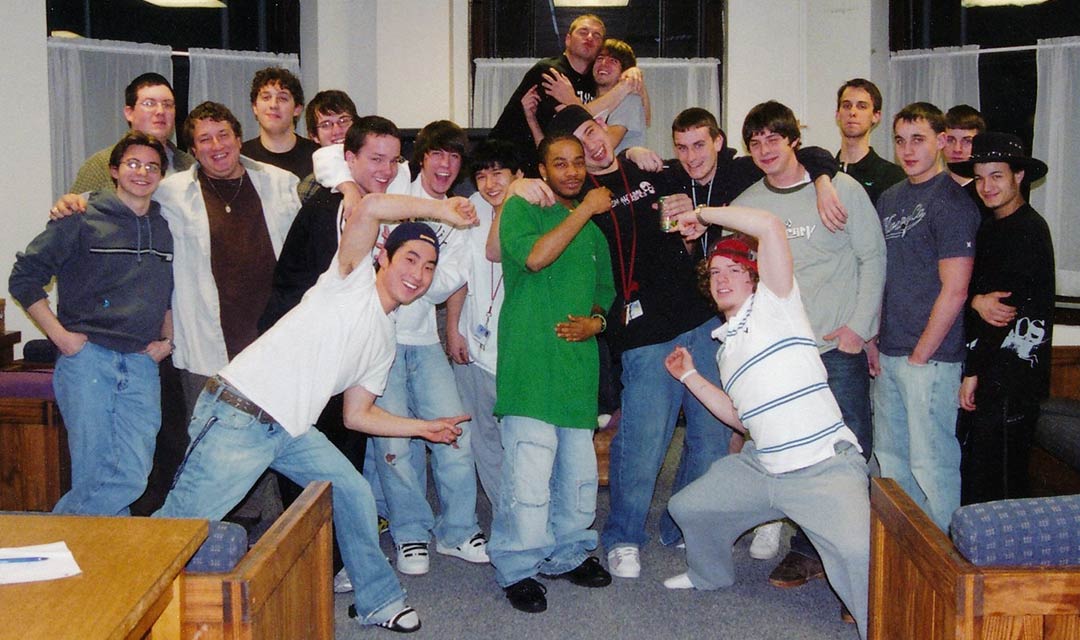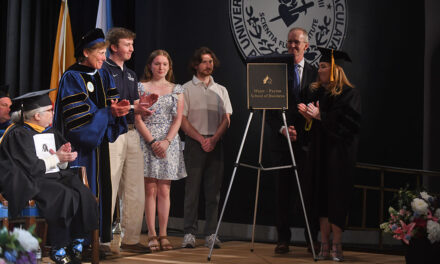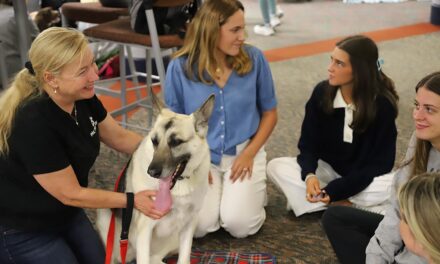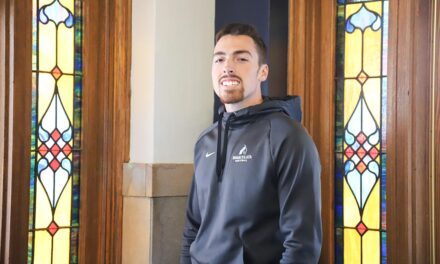In 2003, Immaculata University made the bold decision to admit traditional undergraduate men into what had previously been the Women’s College. When the first male students arrived in August 2005, it became clear that this decision was not only necessary to offset enrollment pressures; it was also transformative.
This move came at a critical time. Nationwide, interest in attending an all-women’s college was falling. Subsequently, the number of women’s colleges was also rapidly declining due to low demand. According to the Women’s College Coalition, there were approximately 230 women’s colleges in the U.S. in 1960; by 2023, that number had dropped to just 30.
With momentum gained over the past two decades, Immaculata welcomed its largest incoming class in the University’s history for fall 2025, a powerful testament to how going coed helped propel the institution forward.
Transitioning to Coeducation
Founded in 1920 by the Sisters, Servants of the Immaculate Heart of Mary (IHM), Immaculata’s core mission was to educate young women. Through the mid-20th century, enrollment remained strong. However, as more traditionally male universities began admitting women, female students had more college choices, and the appeal of single-sex education declined. By the late 1990s, many women’s colleges struggled with enrollment.
Immaculata was no exception. In the early 2000s, the total enrollment for all traditional undergraduate female students in the Women’s College was about 400 students, with about 30% of these students deciding to leave the University before graduating.
Additionally, demographic trends at the time indicated that the pool of prospective students who chose to attend a Catholic women’s college had declined. The “Chronicle of Higher Education” reported only 4% of all female high school students considered attending a women’s college—and for those considering a Catholic women’s college, the percentage was further reduced.
Faced with these challenges, the University considered whether admitting men could help secure its future. The Women’s College Viability Task Force was established to explore the issue, working alongside a consulting firm engaged by Immaculata. Over a six-month period, they gathered feedback from alums, donors, students, staff, faculty and friends. After their exhaustive research, the recommendation was clear: admit male traditional undergrads.
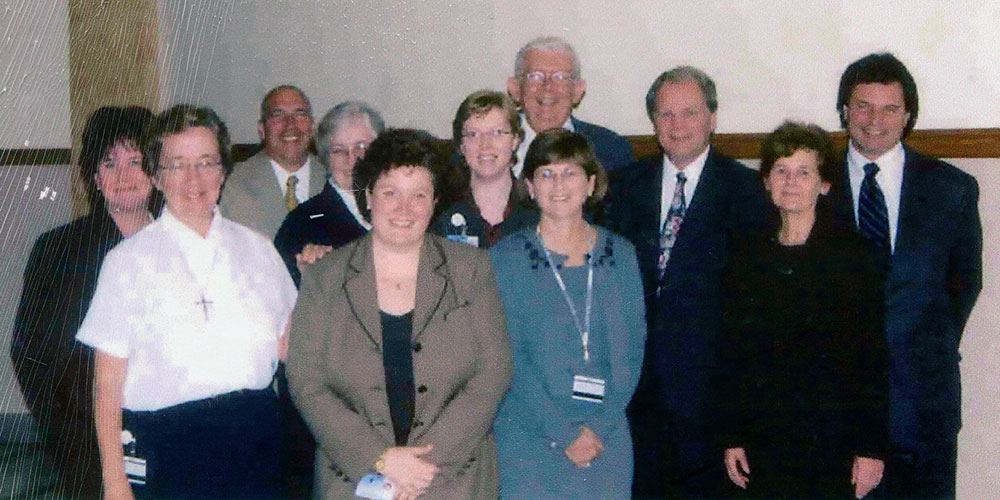
On October 7, 2003, Immaculata’s Board of Trustees approved the recommendation. The University had less than 24 months to prepare!
The implementation task force tackled logistics such as extending dining hours, renovating housing, creating men’s sports teams and adding male locker rooms. New majors and minors were introduced to broaden appeal, including political science, graphic arts and foreign languages.
The University also prepared culturally for the change. From new residence life policies to enhanced programming, the move to coed was more than just adding male students; it was a reinvigoration of the community.
When the fall 2005 semester began on August 30, the results were noticed throughout the campus as Immaculata welcomed its largest incoming class in history at that point, with 340 first-year students enrolled. Approximately 35% of incoming students were male, which far exceeded the national average for newly coeducational institutions.
The Guys Arrive
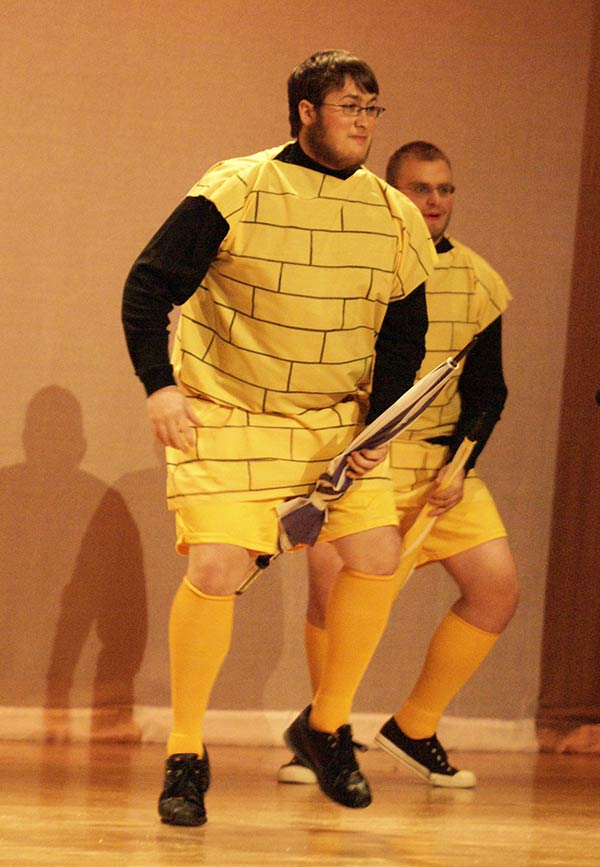
Prior to Immaculata’s adoption of a full coeducational model, Immaculata had long admitted men to graduate and continuing education programs. The first traditional undergraduate male, however, was Alexander Hughes-Taylor ’09. After visiting campus and meeting the history faculty, the St. Joseph’s Prep senior was inspired to apply. Once at Immaculata, he decided to major in history, politics, and international relations, with minors in Middle Eastern studies and philosophy.
From residence life to campus ministry, Hughes-Taylor fully embraced student life. He fondly remembers his time with the Cue & Curtain Theatre group. “Sister Marcelle was one of my favorite people on campus,” he said. “Her love of the theater was infectious, and her ability to bring the cast together and put on a spectacular performance was incredible.”
Now, Hughes-Taylor works as an aquatics program coordinator for the Philadelphia Parks and Recreation Department and lives in the city with his wife and two children.
One of the friends that Hughes-Taylor met at Immaculata was James Malinowski ’09, a fellow Philadelphian majoring in theology. The two performed together in several Cue & Curtain productions.
Wanting a small Catholic college near his home, Malinowski visited Immaculata with his parents in the winter of 2004. “The campus, coated in white, was so calm and picturesque, I knew it was where I wanted to go,” he recalled. Today, he is the director of religious education at St. Pius X Parish in Broomall, Pennsylvania and lives nearby with his wife, Erin [nee Rogers], a 2010 Immaculata alumna and their three children.

Charles McKinney also joined the Class of 2009 and became the first male in the University’s Gospel Choir. However, his greatest pride was serving as editor-in-chief of “The Immaculatan,” launching its first digital version and fueling his passion for writing.
Since graduating from Immaculata, McKinney uses the skills he learned as an international business and foreign language dual major to teach English around the world. He has lived in South Korea, China, Thailand, Macedonia, Rwanda, Saudi Arabia, Kuwait, Iraq and Kazakhstan. After earning advanced degrees, he now serves as director of a language center in Morocco.
Changing Perspective of Gender for Students and Professionals
The shift to coeducation not only opened the campus to men, it also strengthened the institution’s appeal to a wider range of women. Across the U.S., women began outnumbering their male counterparts in attaining college degrees. According to a 2024 Pew Research Center report, 47% for women earned a bachelor’s degree in 2024 compared to 37% of men). In a separate study, the Pew Research Center also reported that women made up 47% of the U.S. civilian labor force in 2023, up from 30% in 1950. Today, over a third of women work in the nation’s ten highest-paying occupations, compared to just 13% in 1980.
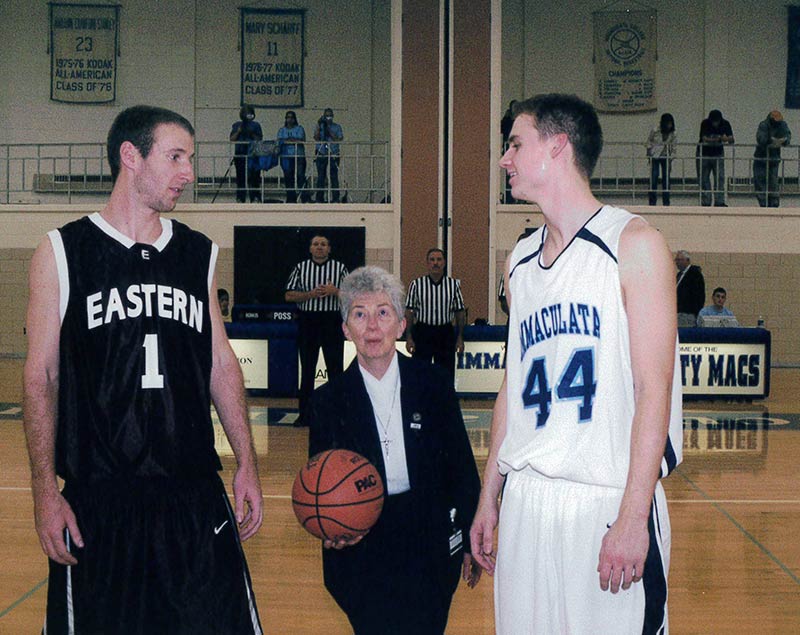
While women still make up the majority of Immaculata’s student body, it’s clear that the decision to go coeducational has positioned the University for long-term success. Currently, undergraduate males account for nearly 32% of the student body.
“As a graduate of Immaculata when it was an all-female institution, I can attest to the quality education and the opportunities it afforded me,” stated University President Barbara Lettiere ’72. “Since becoming president, I have witnessed the mighty impact that the men on campus have made to the overall environment. It certainly isn’t the same as it was when I was a student. It’s better.”
Since transitioning to coeducation, Immaculata has become a powerhouse of Catholic education in the region. With the expansion of athletic teams, student clubs and organizations and academic offerings, the University is creating a more vibrant, inclusive campus culture. Immaculata has graduated 917 traditional undergraduate men since 2009, who, like the three mentioned above, have gone on to become exemplary leaders in the local community and beyond.
It was evident from the first coed class that the men love Immaculata. “I am appreciative to reflect on my collegiate journey as it was one of the best periods of my life,” stated McKinney. “Immaculata is a special place—one I am truly fond of—that’s helped shape the person I am today.”

